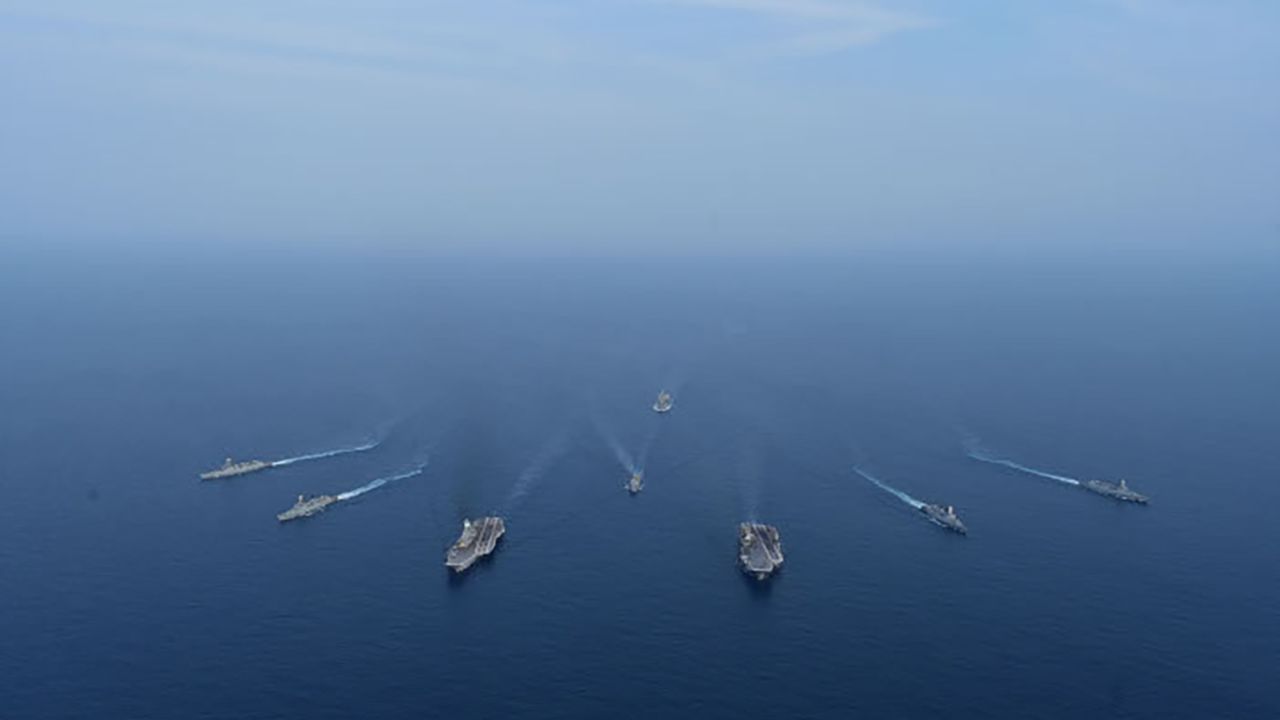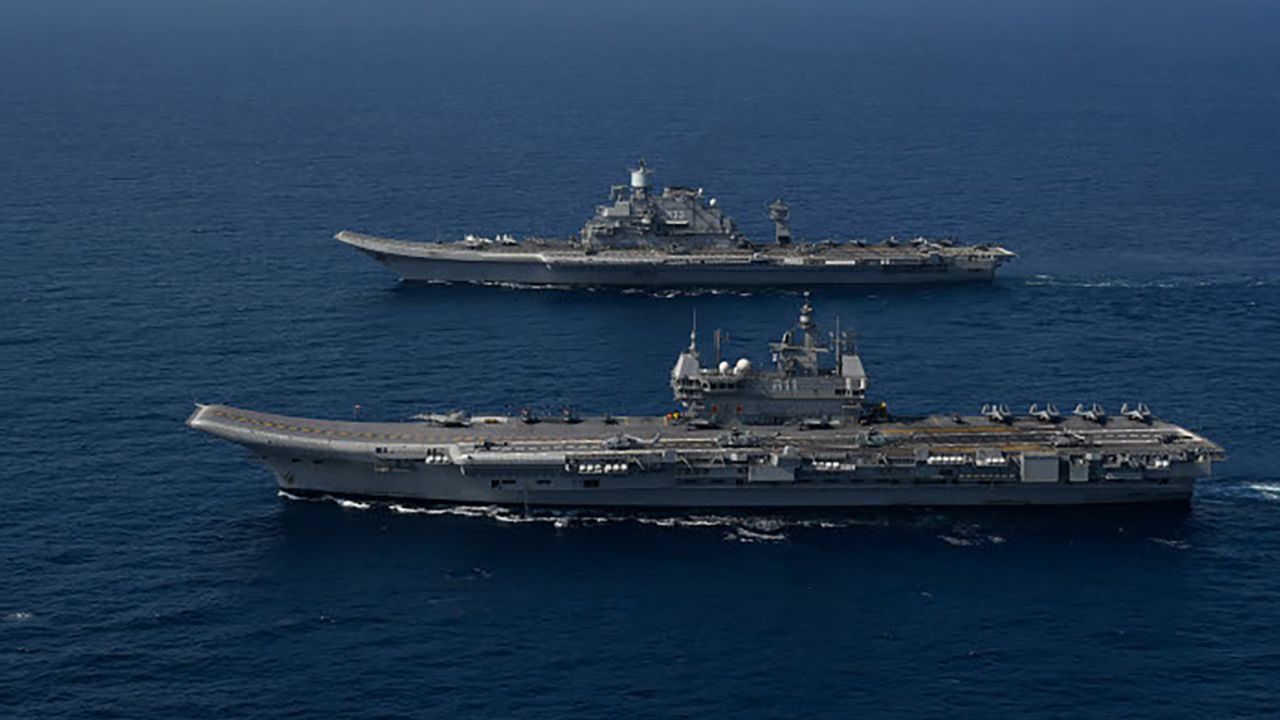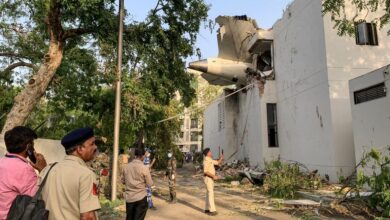
Analysts say it’s a big accomplishment and one that only the United States Navy has pulled off in recent memory.
“This is not a small achievement and underlines that the Indian Navy is one of very few in the world that operates more than one aircraft carrier,” said Nick Childs, senior fellow for naval forces and maritime security at the International Institute for Strategic Studies (IISS).
The two aircraft carriers, INS Vikramaditya and INS Vikrant, led the exercise with more than 35 aircraft and an array of surface ships and submarines, according to a press release from the Indian Navy.
“The successful demonstration of two-carrier battle group operations serves as a powerful testament to the pivotal role of sea-based air power in maintaining maritime superiority,” the release said.
India became capable of dual-carrier operations when the $3 billion Vikrant, India’s first domestically built carrier, was commissioned last September, joining Vikramaditya, which was bought from Russia and went into service in 2013.

Upon Vikrant’s commissioning last year, India joined only the United Kingdom and China in commissioning a domestically built aircraft carrier in the previous three years.
But while both China and the UK have more than one aircraft carrier in their modern fleets, neither has yet to perform dual-carrier operations with them, analysts said.
Collin Koh, research fellow at the S. Rajaratnam School of International Studies in Singapore, said India’s naval history may put it ahead of China, whose People’s Liberation Army (PLA) Navy is the world’s largest, in the current operating environment for aircraft carriers.
“The Indian Navy has had decades-long experience and expertise in aircraft carrier ops and this is probably the key advantage it possesses over the PLA Navy, its key rival in this field, despite the latter’s relative advance in its indigenous aircraft carrier program,” Koh said.
China has two aircraft carriers in service, the Soviet-built Liaoning and the domestically built Shandong, while a third carrier, the Fujian, has been launched but not commissioned.
Hawaii-based analyst Carl Schuster, a former US Navy captain, said India’s dual-carrier operations this week show “the rejuvenation of the Indian Navy.”

India commissioned its first aircraft carrier in 1961 and added a second in 1987. It has operated two aircraft carriers on two previous occasions, between 1987 and 1997, and between 2013 and 2017.
“It should be remembered that the Indian Navy has always been a highly trained, tightly disciplined and very proficient force,” Schuster said.
The Indian Navy press release called the carriers “floating sovereign airfields,” adding that “they provide our friends with an assurance that the Indian Navy is capable and ready to support our ‘collective’ security needs in the region.”
New Delhi’s forces have been stepping up cooperation with other navies in the Indo-Pacific, including those in the informal Quad partnership – the United States, Japan and Australia – in the annual Malabar naval exercises.
“India’s partnerships and collaborative exercises with other navies have broadened the navy’s operational knowledge and open ocean experiences,” Schuster said.
What the Indian Navy can learn about dual-carrier operations from the United States could be substantial. The US Navy operates the world’s largest carrier fleet – 11 warships – and just last week had two of those, the USS Nimitz and USS Ronald Reagan, operating together in the Philippine Sea.
The US Navy sees China as a “pacing threat” in the Indo-Pacific, and India’s naval operations look toward China too, Schuster said.
“China’s aggression along the (shared Himalayan) border and expanding operations and presence in the Indian Ocean have become India’s most serious security concern. The naval expansion and modernization is intended to address that concern,” Schuster said.
But even with the advancements demonstrated by the dual-carrier operation, India’s carrier program still has question marks, said Childs from IISS.
“While an impressive-looking display, there may be some question over what this really amounts to as yet in terms of actual operational capability,” he said, noting that images from the Indian operation showed relatively few fighter aircraft on the decks of the Vikramaditya and Vikrant.
“This may indicate limited aircraft availability, or that the ships’ capacities are somewhat constrained at the moment. It would certainly suggest that the Indian Navy could do with more carrier aircraft,” Childs said.




